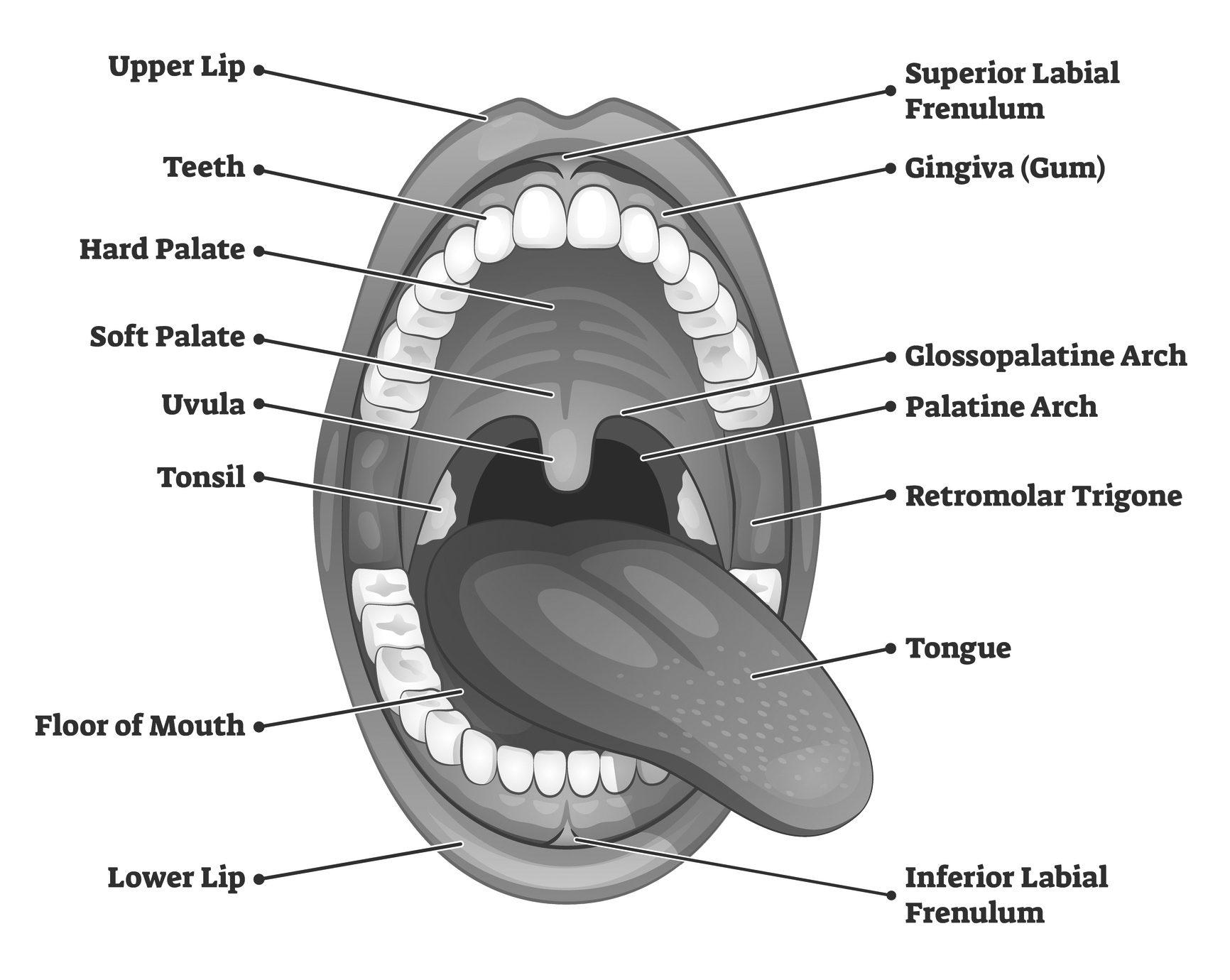
Floor Of Mouth Anatomy Pdf Free Bios Pics
Pros and Cons CT and MR are used for the majority of nondental imaging in the oral cavity. Plain radiographs, orthopantomography, and occlusal views remain useful tools for studying the teeth and mandible as discussed in Chapter 96.

AN3 08 Oral Cavity, Oropharynx, Swallowing StudyBlue
Full text PDF Tools Share Abstract Familiarity with the radiologic anatomy and landmarks of the floor of the mouth is helpful for detecting and characterizing pathologic processes that occur there and extend to deep tissues and beyond.

Floor of the mouth
Overview of anatomy. The borders of the oral cavity are the lips, anteriorly; mylohyoid muscle, alveolar mandibular ridge and teeth, inferiorly; gingivobuccal regions, laterally; circumvallate papillae, tonsillar pillars and soft palate, posteriorly; and the hard palate and maxillary alveolar ridge and teeth, superiorly [].The submandibular space as well as the traditionally held oral cavity.
jaw anatomy muscles
The main structures of the floor of the mouth include the mylohyoid muscles, the geniohyoid muscles, the sublingual glands, the deep processes (oral parts) of the submandibular glands, and the lingual mucosa stretching from the inner aspect of the mandible to the body of the tongue (Fig. 24.3 ).
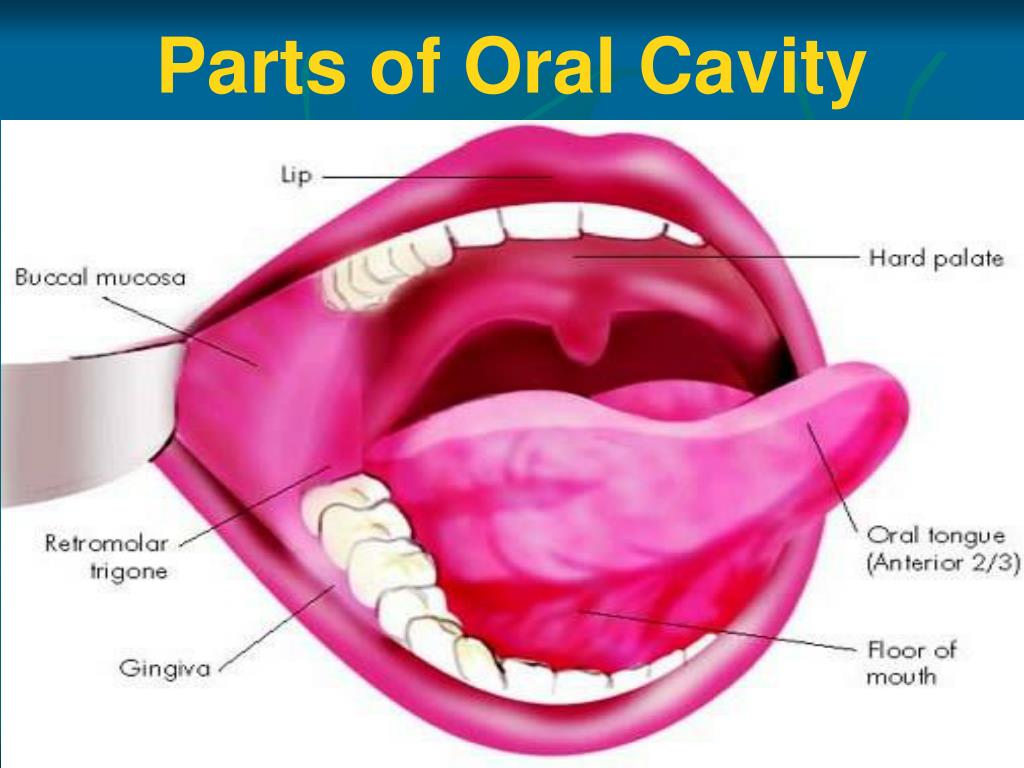
PPT Anatomy of Oral Cavity, Pharynx & Oesophagus PowerPoint
A wide range of pathologic processes may involve the floor of the mouth, the part of the oral cavity that is located beneath the tongue. They include lesions that arise uniquely in this location (eg, ranula, submandibular duct obstruction) as well as various malignancies, inflammatory processes, and vascular abnormalities that may also occur elsewhere in the head and neck.
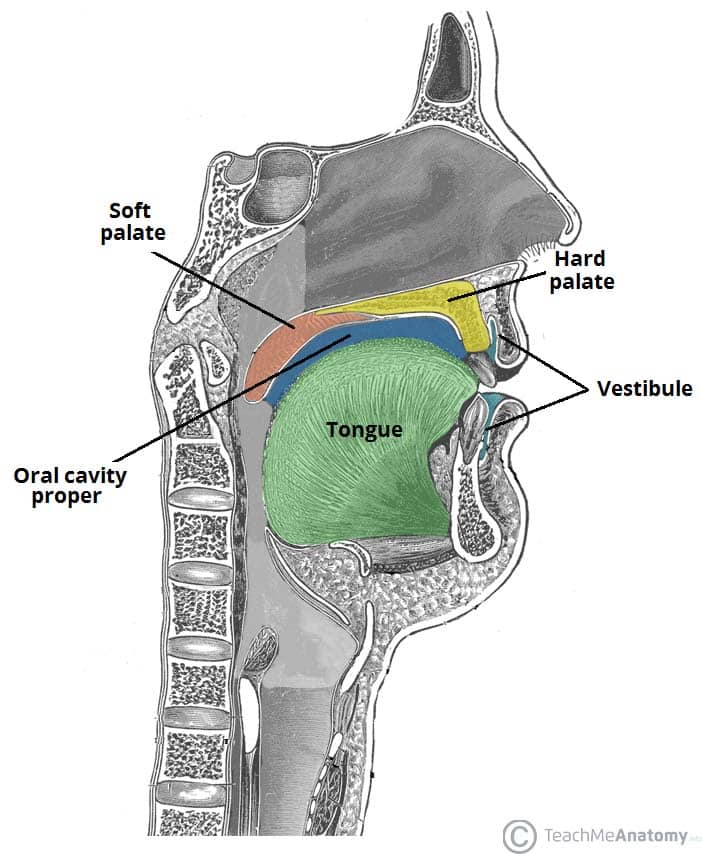
The Oral Cavity Divisions Innervation TeachMeAnatomy
What's my mouth's function? Your mouth supports many daily functions, including: Breathing. Talking. Chewing. Tasting. Swallowing. Eating. Drinking. Mouth function in digestive system Your mouth is where digestion begins. When you chew food, your salivary glands make saliva (spit). Saliva helps break down starches in the foods you eat.

Oral cavity
The floor of mouth (i.e., sublingual space) is a U-shaped region, bordered inferiorly by the mylohyoid muscle, laterally by the gingiva overlying the lingual surface of the mandible, superiorly by the oral tongue, and posteriorly at the insertion of the anterior tonsillar pillar into the tongue (Fig. 14-5). From: Oncologic Imaging, 2002
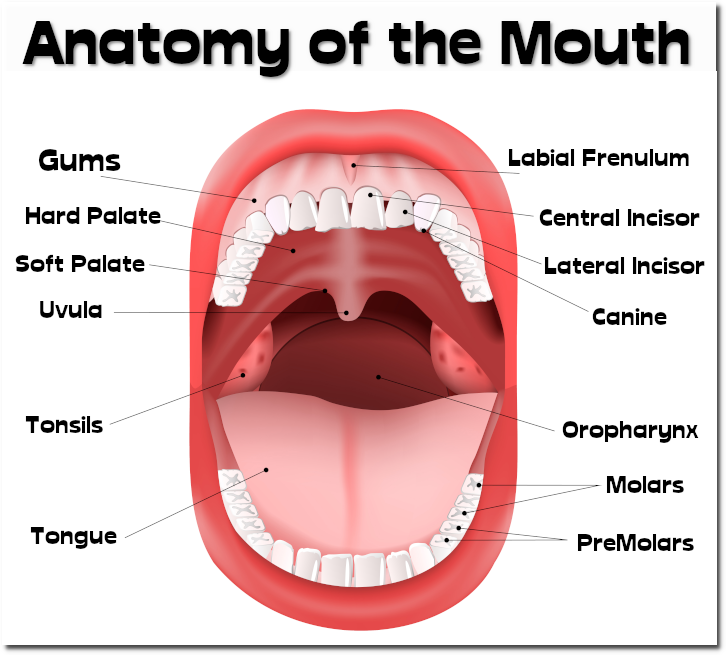
Anatomy of the Mouth everythingherbs
Ultrasound is an active learning tool that can be used to supplement didactic instruction. This study describes a self-guided activity for learning floor of mouth ultrasound. Thirty-three first year medical students learned floor of mouth scan technique and ultrasound anatomy through a brief PowerPoint module.

Sublingual and submandibular glands drainage inside the floor of the
It consists of several different anatomically different aspects that work together effectively and efficiently to perform several functions. These aspects include the lips, tongue, palate, and teeth. Although a small compartment, the oral cavity is a unique and complex structure with several different nerves and blood vessels inside it.

Schematic drawing of the oral cavity [97]. Download Scientific Diagram
Anatomy of the Floor of the Mouth Fig. 1: Normal anatomy of the floor od the mouth on contrast enhanced MDCT studies. A, D - coronal, B - axial at the level of the mandible, E - axial at the level of the hyoid bone, C - coronal Important anatomical landmarks of the floor of the mouth - paired muscles and spaces:

23.3 The Mouth, Pharynx, and Esophagus Anatomy & Physiology
The floor of mouth is an oral cavity subsite and is a common location of oral cavity squamous cell carcinoma . Gross anatomy The floor of mouth is a U-shaped space which extends (and includes) from the oral cavity mucosa superiorly, and the mylohyoid muscle sling 2,3 . Boundaries superiorly: oral mucosal space inferiorly: mylohyoid muscle 3

PPT ORAL ANATOMY PowerPoint Presentation, free download ID2381675
Introduction. Radiological evaluation of the floor of the mouth (FOM), an anatomical compartment of the oral cavity, is complex and challenging. 1 The region harbours different types of tissues, including salivary glands, ducts, mucosa, submucosal soft tissues and the bony mandible and can be associated with a wide range of diseases, including congenital, inflammatory, infective, benign and.
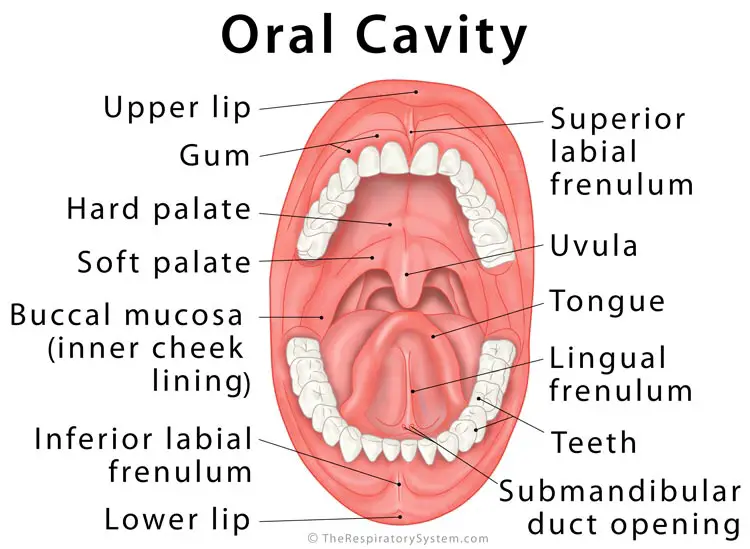
What is the Oral Cavity
The mouth opens to the outside at the lips and empties into the throat at the rear; its boundaries are defined by the lips, cheeks, hard and soft palates, and glottis. It is divided into two sections: the vestibule, the area between the cheeks and the teeth, and the oral cavity proper.
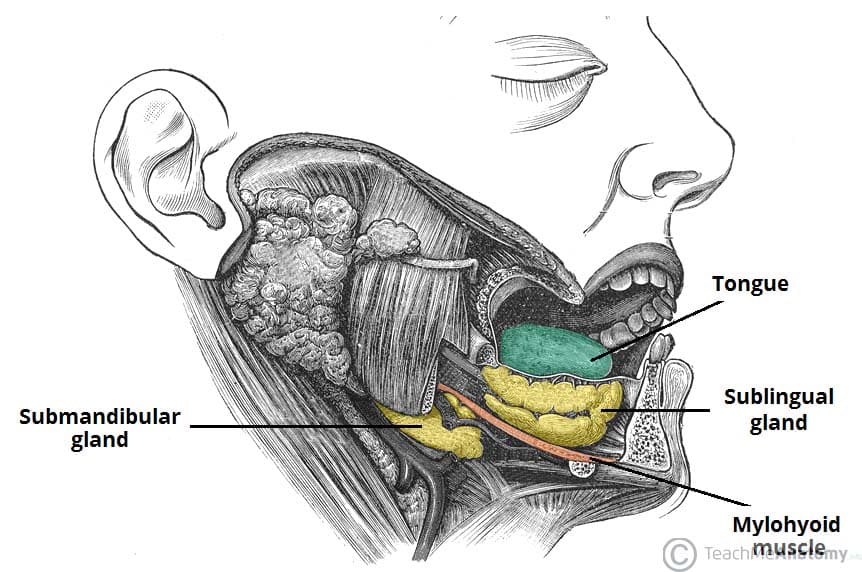
The Oral Cavity Divisions Innervation TeachMeAnatomy
A computed tomography (CT) technique is described which demonstrates the structures and tissue planes in the floor of mouth, tongue and oropharynx. The anatomy, which forms the basis for understanding pathological change, is given in detail and illustrated by axial and coronal images and line drawings.

Gross Anatomy Glossary Oral Cavity Draw It to Know It
Structure Oral cavity Anatomy of the mouth. Floor of the mouth with lingual frenum and sublingual fold The mouth consists of two regions: the vestibule and the oral cavity proper. The vestibule is the area between the teeth, lips and cheeks. [3]
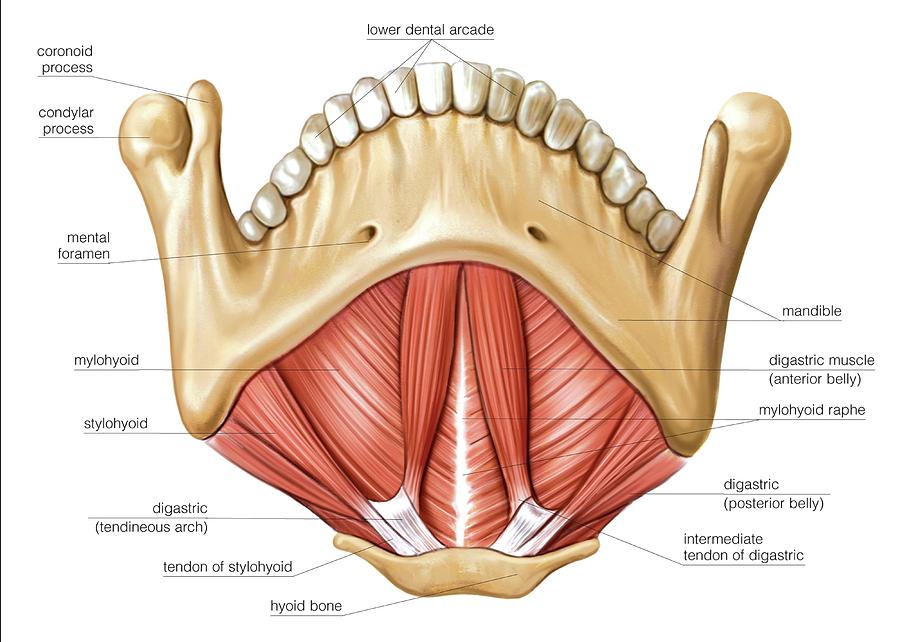
Muscles Of The Floor Of Mouth Photograph by Asklepios Medical Atlas
Each student was asked to label the floor of mouth muscles on the image he or she acquired. After the activity, the students were given a quiz on anatomic relationships of the floor of mouth. Perceptions about the activity were collected through a survey. All 33 students obtained a floor of mouth image within a three minute time limit.